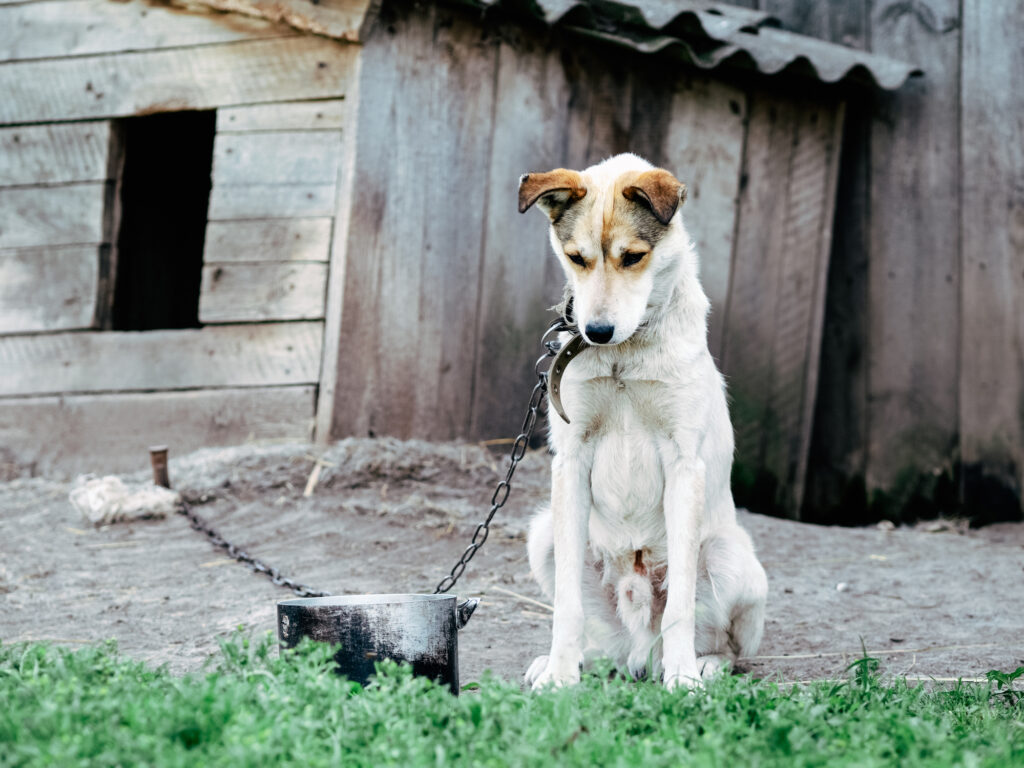Animal neglect isn’t always loud or obvious. It can be quiet, routine, and deeply unsettling. When Sarah first noticed her neighbor’s dog tied up outside day after day, rain or shine, sweltering heat or bitter cold, she felt uneasy. The dog looked lonely, its fur matted and its water bowl often empty. But Sarah wasn’t sure: Was this truly neglect, or just a different approach to pet care?
Like many well-meaning individuals, she wrestled with the question: When does concern become cause for intervention?
This story highlights a common and often confusing dilemma faced by compassionate people across the country. Understanding the difference between responsible pet ownership and animal neglect is the first step toward making informed, effective decisions that protect animal welfare without jumping to conclusions.
Understanding Animal Neglect vs. Responsible Ownership
Animal neglect occurs when an owner fails to provide the basic necessities required for an animal’s well-being. According to the ASPCA, neglect is the most common form of animal mistreatment reported to animal welfare organizations.
Many people are unsure what animal neglect actually looks like in practice. Does an overgrown yard and a barking dog mean neglect? What about a pet left outside for extended periods? Recognizing neglect requires understanding what should be happening in a healthy, responsible pet environment.
Elements of Responsible Dog Ownership
Before we can recognize what’s wrong, we need to be clear about what’s right. Responsible dog ownership isn’t about perfection. It’s about commitment, care, and consistency.
- Regular Veterinary Care: Annual check-ups, vaccinations, and preventive care as recommended by the American Veterinary Medical Association. Routine vet visits are more than checkups, they’re a frontline defense against disease and suffering.
- Proper Nutrition: High-quality food appropriate for the dog’s age, size, and health conditions, as outlined by the American Kennel Club. Dogs require high-quality food appropriate for their life stage, weight, and medical needs. Malnutrition isn’t always about starvation; sometimes, poor-quality diets can quietly harm a pet over time.
- Exercise and Mental Stimulation: Daily walks, play sessions, and engaging activities. All dogs need daily physical activity and mental engagement. Lack of movement and boredom can lead to destructive behavior, anxiety, and poor health.
- Training and Socialization: Positive reinforcement training methods and proper socialization with other dogs and people. Training builds communication and trust. Socialization prevents fear-based behavior. Dogs need positive experiences with people, other animals, and different environments to feel confident and secure.
- Safe Living Environment: Clean, appropriately sized living space with protection from extreme weather. Whether indoors or outdoors, dogs must be kept in clean, comfortable conditions protected from heat, cold, rain, and hazards. Constant chaining, overcrowding, or isolation can cause severe psychological harm.
- Legal Compliance: Following local licensing requirements and leash laws. Responsible owners know and follow local regulations.
Common Signs of Animal Neglect
Animal Neglect can be subtle or obvious. Here are key indicators that an animal might be experiencing neglect:
- Lack of Basic Necessities: No access to food, water, or proper shelter from the elements
- Poor Physical Condition: Extreme thinness, untreated wounds, severe matting of fur, or obvious illness left untreated
- Inadequate Living Conditions: Kept in filthy environments, confined in too-small spaces, or left in extreme temperatures
- Behavioral Signs: Excessive lethargy, signs of anxiety or depression, or unusual aggression that might indicate psychological distress
It’s important to note: one bad day isn’t necessarily neglect. But ongoing patterns, especially when basic needs are unmet, should raise concern.
Legal Aspects of Animal Neglect
Animal neglect is considered a form of animal cruelty and is illegal in all 50 states. The Animal Legal Defense Fund provides state-specific information about animal cruelty laws. While laws vary by jurisdiction, most states define neglect as failing to provide:
- Adequate food and clean water
- Proper shelter from the elements
- Necessary veterinary care
- Basic grooming and sanitation

If you suspect animal neglect, you can report it through our animal abuse reporting system or contact your local animal control office.
The Impact of Neglect on Animals
The effects of animal neglect can be devastating and long-lasting. At the Wounded Paw Project, we’ve witnessed countless cases where neglected animals required extensive rehabilitation to overcome both physical and psychological trauma.

At the Wounded Paw Project, we’ve seen firsthand what neglect can do. Take Jazmine, for example. A shepherd mix found tied to a pole, underweight and covered in sores. She was terrified of human touch. With months of care, rehabilitation, and patient fostering, Jazmine not only recovered but learned to trust again. Today, she thrives in a loving home. These transformations remind us why intervention matters, and that recovery is possible.
Supporting Pet Owners and Preventing Neglect
Neglect isn’t always rooted in malice. Sometimes it stems from lack of knowledge, financial hardship, or personal crisis. In such cases, offering resources—not punishment—can make the biggest difference.
The Humane Society offers resources for pet owners facing financial hardships. Additional support includes:
- Pet Food Assistance: Many food banks and shelters offer free or discounted pet food.
- Low-Cost Clinics: Local nonprofits often provide affordable vaccines, spay/neuter services, and exams.
- Temporary Fostering: Some organizations offer short-term care for pets during medical emergencies, domestic violence situations, or housing instability.
- Education & Outreach: Flyers, social media campaigns, or neighborhood meet-ups can help spread awareness of proper pet care and available support.
- When we treat neglect as a community problem, we create community-based solutions.
How to Help Neglected Animals
If you encounter a case of animal neglect, here are steps you can take:
- Document Everything: Take photos, videos, and notes about the conditions you observe
- Report the Situation: Contact local animal control or call our Animal Abuse Hotline at (844) 728-2729
- Offer Support: Sometimes, neglect occurs due to temporary hardships. If appropriate and safe, offer assistance to the pet owner
- Follow Up: Stay involved and follow up with authorities if conditions don’t improve
Understanding the difference between responsible pet ownership and neglect is crucial for creating a better world for our animal companions. By maintaining high standards of care and being vigilant about neglect in our communities, we can ensure more animals live happy, healthy lives.
For more information about helping abused and neglected animals, visit our guide on how to help abused dogs or contact the Wounded Paw Project directly.
